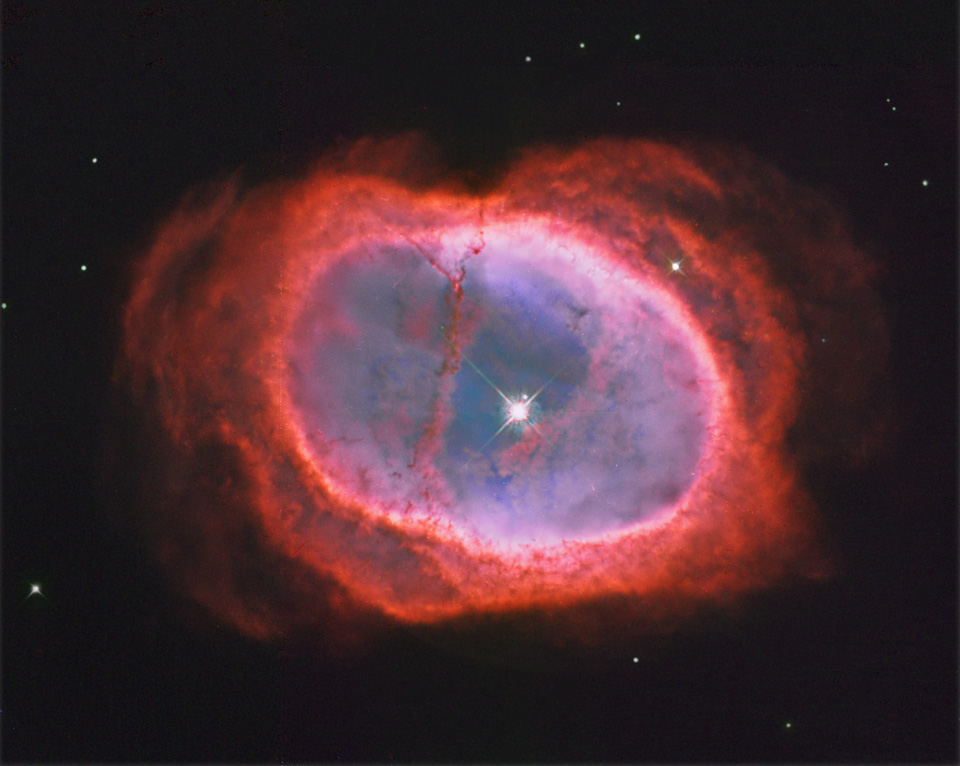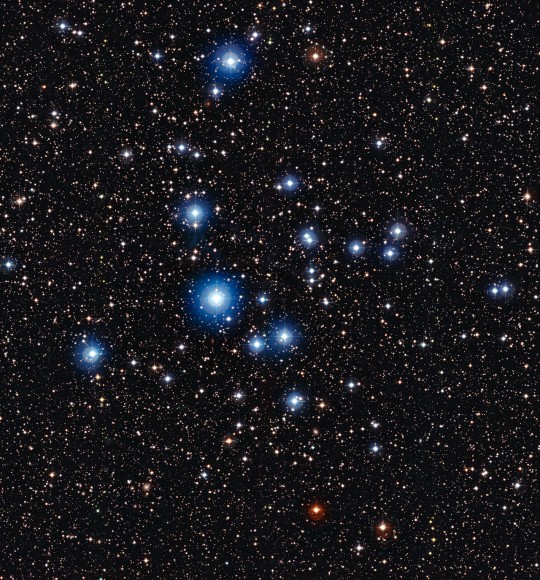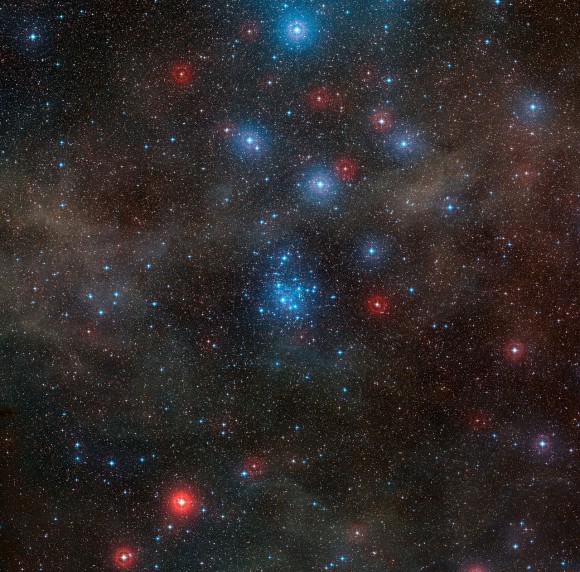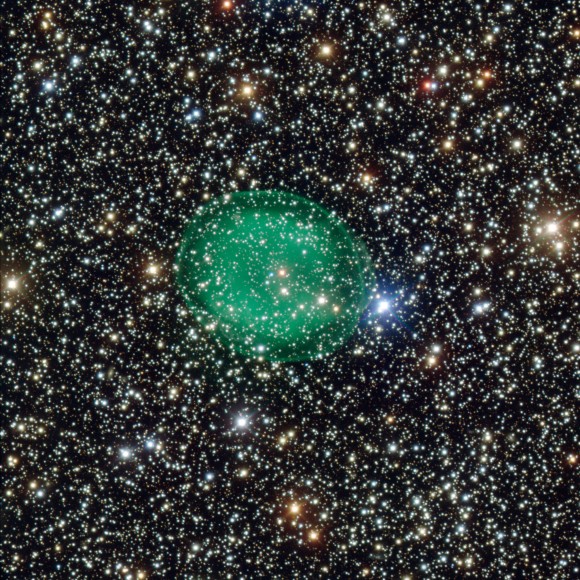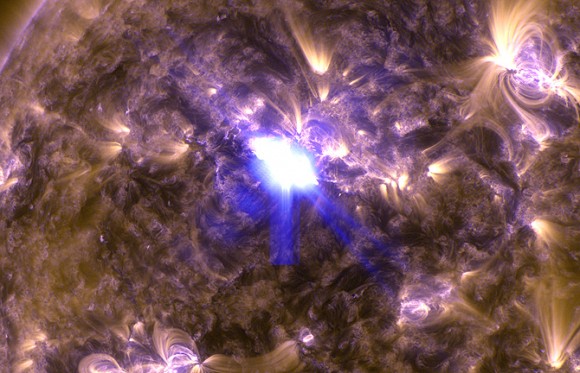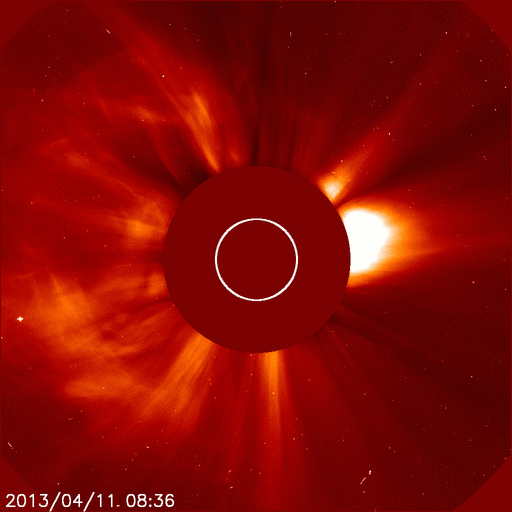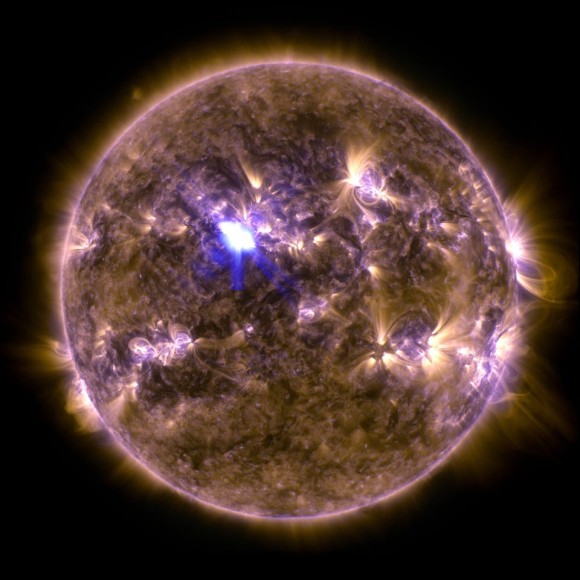_________________
Distant Stars Look Very Much Like Our Local Neighbors | Phil Plait
Bad Astronomy | Thursday, April 4, 2013, at 8:00 AM

^ Image credit: X-ray: NASA/CXC/Univ.Potsdam/L.Oskinova et al; Optical: NASA/STScI; Infrared: NASA/JPL-Caltech
- A gorgeous image of stars being born in a nearby galaxy has revealed that in some ways, they may not be very different from stars in our own local neighborhood.
The picture above is a combination of images from several orbiting observatories sensitive to different kinds of light: X-rays from the Chandra Observatory (colored purple in the picture), visible light using Hubble (colored blue, green, and red), and infrared light from Spitzer (colored red). It shows the magnificent nebula NGC 602, a vast star-forming region in the Small Magellanic Cloud (or SMC), a satellite galaxy to our Milky Way.
The gas cloud itself is a bubble; the bright stars in the center are massive, and their fierce light has eaten away at the material around them, carving out the interior. Denser parts of the gas take longer to erode, so they leave wakes behind them, like sandbars; those are the fingers of material around the edge that point toward the center.
Not all the stars being born are monsters, though. Most are far less massive, and much cooler, like the Sun is. However, there is a big difference: Star in the SMC tend to have lower amounts of heavy elements in them. Astronomers call these “metals”: anything in the periodic table above hydrogen and helium. Compared to the Sun, and most stars in the Milky Way, on average stars in the SMC have less oxygen, carbon, iron, and so on.
The question is, does that make any difference? Do these stars behave differently, or are their other characteristics similar to stars like ours?
That’s why these observations were made. The astronomers found that the young, low-mass stars being born in one part of NGC 602 are bright in X-rays. It’s known that low-metal stars don’t generate much wind—that is, they have no or a far weaker solar wind of subatomic particles blowing from their surfaces. That’s how X-rays in gas clouds like these are usually generated, but that’s not the case here.
What must be causing the X-rays is activity on the star’s themselves. That means they have magnetic activity, much like our Sun’s sunspots, flares, and other solar eruptions. Given that this activity is similar to stars in our own galaxy of comparable age and mass (and also looking at results from the observations in visible and IR light), that implies these stars may be similar in other ways as well. The astronomers behind this study speculate that may include the way the stars form, with disks of swirling material around them.
Our neighbors, ourselves!
Well, kinda. We have to be careful not to extrapolate this too far. The amount of metals in a star does have some consequences. High mass stars can have even greater mass if they are metal poor, because some of those elements are really good at absorbing light. A star with those elements in it gets hotter due to the trapped energy, expands bigger, and at a certain mass will get so energetic that it will tear itself apart (this is called the Eddington Limit, and we do see stars near it that are very eruptive and unhappy). All things being equal, a metal-poor star can get more massive than its metal-rich counterpart.
One interesting aspect of this that surprised me a few years ago was that stars in our own galaxy that are metal poor can still have planets! I’d have thought planet formation would be easier if there were more heavy elements to form silicates and such, like in our own solar system. It may be harder to form planets if a star is deficient in those elements, but it’s not impossible. We do know that metal-rich stars are more likely to form big planets, but it’s not known what happens with planets down to the size of Earth. That’s something I’d be very curious to know about.
Anyway, one of the best ways to learn about ourselves is the compare-and-contrast method, and NGC 602 provides us with a great example of both. Those stars are over 150,000 light years away—1.5 million trillion kilometers—I’ll note. And even born under very different circumstances, distant, foreign stars look very much like the ones we have at home. If there’s a life lesson to be taken from this, feel free to find it.


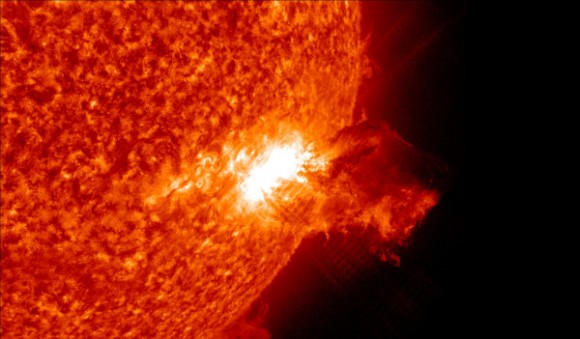





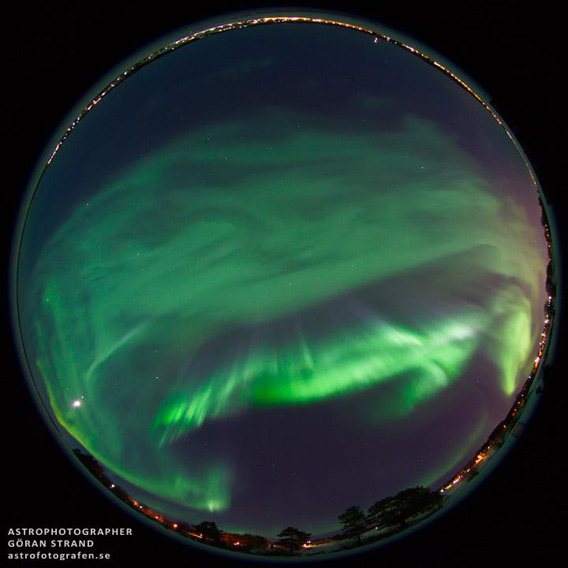
 ]
]